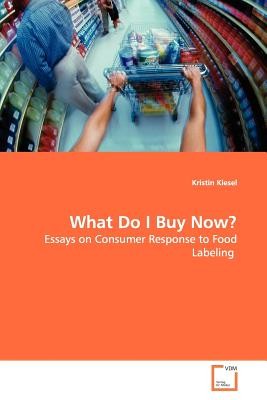
- We will send in 10–14 business days.
- Author: Kristin Kiesel
- Publisher: VDM Verlag
- ISBN-10: 3639141792
- ISBN-13: 9783639141795
- Format: 15.2 x 22.9 x 1 cm, softcover
- Language: English
- SAVE -10% with code: EXTRA
Reviews
Description
Choosing among 320,000 food products currently available in supermarkets is not an easy task. Words and symbols printed on packaging keep growing and compete for consumers attention to otherwise tasteless dimensions-environmental concerns, ethical and social considerations, nutritional content, and health effects. Three essays analyze consumer response to several aspects of food labeling in the U.S. The first essay focuses on the National Organic Program and estimates consumer valuation of the change labeling regulations. The second essay links media coverage of organic food production to food purchases. Nutritional shelf labels implemented in a market-level experiment allow testing if information costs prevent consumers from making healthier food choices in the third essay. Utilizing unique data sources allows analyzing actual purchase behavior rather than survey responses or hypothetical choice experiments. The reduced form and structural estimations, as well as the experimental design directly address interdependencies between regulation, advertisement, and media coverage.
EXTRA 10 % discount with code: EXTRA
The promotion ends in 16d.05:59:28
The discount code is valid when purchasing from 10 €. Discounts do not stack.
- Author: Kristin Kiesel
- Publisher: VDM Verlag
- ISBN-10: 3639141792
- ISBN-13: 9783639141795
- Format: 15.2 x 22.9 x 1 cm, softcover
- Language: English English
Choosing among 320,000 food products currently available in supermarkets is not an easy task. Words and symbols printed on packaging keep growing and compete for consumers attention to otherwise tasteless dimensions-environmental concerns, ethical and social considerations, nutritional content, and health effects. Three essays analyze consumer response to several aspects of food labeling in the U.S. The first essay focuses on the National Organic Program and estimates consumer valuation of the change labeling regulations. The second essay links media coverage of organic food production to food purchases. Nutritional shelf labels implemented in a market-level experiment allow testing if information costs prevent consumers from making healthier food choices in the third essay. Utilizing unique data sources allows analyzing actual purchase behavior rather than survey responses or hypothetical choice experiments. The reduced form and structural estimations, as well as the experimental design directly address interdependencies between regulation, advertisement, and media coverage.


Reviews